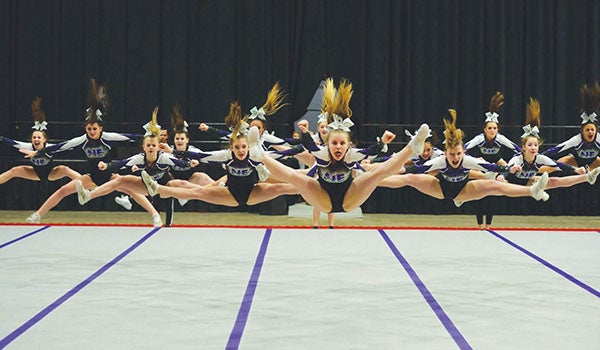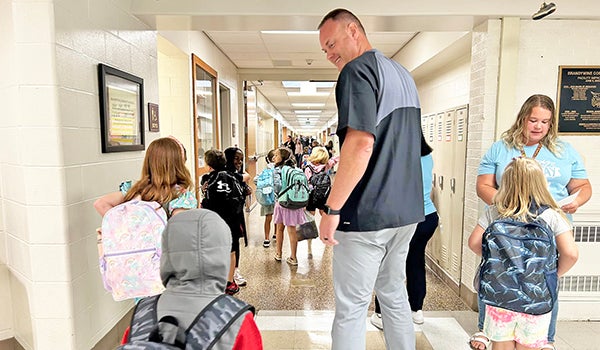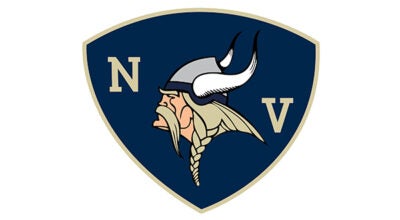Niles Elite Cheerleading tumbles into nationals
Published 8:01 am Friday, January 31, 2020
NILES — Niles Elite Cheerleading prides itself on having a team for everybody from the 15-year-old who has never been a cheerleader to the long-time cheerleader who could find a spot on an elite team.
The program, which has seen its fair share of success, qualified all its eligible teams for nationals. Also, earlier this month, members of the program had a unique opportunity.
Earlier this month, about 40 members of the competition teams were invited to perform at the Harlem Globetrotter’s halftime show.
“We had about two weeks to get a routine together, and my kids had a great time,” said one of the head coaches, Stephanie Tester. “They loved it, went home and practiced in strides, and had a fantastic performance.”
Tester, who has been a head coach for five years, cheered in the same program growing up. The program has been around for more than 20 years, she said.
The other head coach, Jennifer Mason, started the Niles Elite Program. She is in charge of the level-seven team, which is the highest competition team the program has.
The Niles Elite Program has four tryout teams starting at level four and progressing upwards to levels five, six and seven. Athletes try out every year and are never guaranteed a spot. Level four is similar to level five, but tumbling skills are not necessary. The team is less intense than the higher levels and does not require as much travel, Tester said.
At level five, athletes have tumbling and stunting skills. The average age range of the team is 10-years-old. Level six grows in intensity, as more tumbling and tucks are involved. Athletes also start twisting transitions and start learning flip transitions and higher-skilled baskets.
The average age of athletes competing at level seven is 16.
“They have to have layouts, standing tucks. They have more free flipping and twisting that’s involved and harder than level six,” Tester said. “The progression, everything, is a step higher and higher, and gets more difficult.”
The program also has younger divisions with children starting at the age of four and moving their way up. Younger divisions do not require experience, Tester said.
The program experienced success at a local state competition. The level two team took first place, the level four team took fifth place, and the cheerleading teams of levels five, six and seven, placed first.
To add to the success, the try-out competition teams of levels four through seven are nationals bound. Levels three and four will be competing at nationals in Grand Rapids. Levels five through seven are being hosted in San Antonio, Texas.
“Every team that was eligible to make it to nationals, made it to nationals this summer,” Tester said. “Our goal, just like any other routine, is going out there and being proud of what you put on the floor.”
Tester said 90 percent of the time, all of the Niles Elite Cheerleading teams qualify for nationals.
Before each cheerleading meet, Tester gives her athletes pep talks. They vary based on what age group she is coaching. With the youngest athletes, it’s all about the smile and having fun. With the older age groups, she encourages them to reach “Club Zero.”
“We have something called club zero, and that’s where you don’t have any inductions in your routine,” Tester said. “We try to strive for that. It means no stunts fell, and no tumbling falls happen. They get super excited if they hit Club Zero, which is hard to do as you get older, and the stunts get more difficult.”
The cheerleading program is home to more than 200 athletes and attracts athletes from around southwest Michigan and northern Indiana.
“I like to call Niles our sweet spot,” Tester said.
Athletes travel from Niles, Edwardsburg, Buchanan, South Bend, Mishawaka, Elkhart, Goshen and Three Rivers. Despite being from different areas, the program is one big family, Tester said.
“With my older kids, they have such a great bond with their teammates,” she said. “We have kids who do sideline cheer, and they will compete against each other in basketball. They will be cheering and see their friends on the other side.”
For levels one through four, sessions are broken up into 16 weeks in the fall and 16 in the spring. Competitions occur at the 12-week mark. For the beginner levels, they practice for 45 minutes once a week and learn a new section of a routine every week.
Tester’s favorite part of coaching is watching the athletes grow from the beginning of the season to the end of the season in July.
“The little ones that come into class that were crying the first night and first week, end the season being so excited to come to class,” Tester said. “My older kids work so hard to get that back handspring and then start landing them all.”







